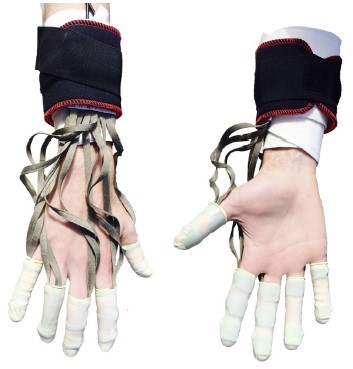Interpreting the human fossil record
One major goal of our experimental research is to develop new methods through which we can extract information on anatomy and locomotion from the human fossil record.

We design experiments in labs or in the field, with humans or other animals, to build mechanistic understandings of the information recorded by various forms of fossil data. For example, in our most recent work, which is funded by the National Science Foundation, we have developed new biplanar X-ray and 3-D animation methods to study how foot anatomy and function are recorded in fossil hominin footprints. We can then turn to hominin footprints, including those that we have excavated in the field, and extract anatomical and functional information to test hypotheses regarding the evolution of human locomotion.
Recent grants:
2024-2029: “CAREER: Tracking the evolution of human locomotion through field, experimental, and computational analyses of fossil footprints.” National Science Foundation (PI: KG Hatala)
2018-2023: “Collaborative Research: X-rays, 3D animation and human locomotion.” National Science Foundation (PI: KG Hatala, co-PIs: SM Gatesy, PL Falkingham)
Selected publications:
Hatala KG, Gatesy SM, Falkingham PL. (2023) Arched footprints preserve the motions of fossil hominin feet. Nature Ecology & Evolution 7, 32-41.
Hatala KG, Gatesy, SM, Falkingham, PL. (2021) Integration of biplanar X-ray, three-dimensional animation and particle simulation reveals details of human ‘track ontogeny’. Interface Focus 11, 20200075.
Hatala KG, Perry DA, Gatesy SM. (2018) A biplanar X-ray approach for studying the 3-D dynamics of human track formation. Journal of Human Evolution 121, 104-118.
Hatala KG, Demes B, Richmond BG. (2016) Laetoli footprints reveal bipedal gait biomechanics different from those of modern humans and chimpanzees. Proceedings of the Royal Society B 283, 20160235.
Hatala KG, Wunderlich RE, Dingwall HL, Richmond BG. (2016) Interpreting locomotor biomechanics from the morphology of human footprints. Journal of Human Evolution 90, 38-48.
Human anatomy and biomechanics
A second goal of our experimental research is to better understand modern human functional anatomy and biomechanics.
We use a variety of lab and field equipment to measure motions (kinematics) and forces (kinetics) during human behaviors, and work to understand how our underlying anatomy functions to produce those motions and/or forces. Past research has examined pressures and forces experienced by our feet during walking and running, and by our hands during various manipulative behaviors. Ongoing cadaveric studies are being conducted to understand how the microanatomy of our hand musculature relates to our unique levels of dexterity.
Selected publications:
Hatala KG, Dingwall HL, Wunderlich RE, Richmond BG. (2013) Variation in foot strike patterns during running among habitually barefoot populations. PLoS One 8(1), e52548.
Williams-Hatala EM, Hatala KG, Key A, Dunmore CJ, Kasper M, Gordon M, Kivell TL. (2020) Kinetics of stone tool production among novice and expert tool makers. American Journal of Physical Anthropology.
Williams-Hatala EM, Hatala KG, Hiles S, Rabey KN. (2016) Morphology of muscle attachment sites in the modern human hand does not reflect muscle architecture. Scientific Reports 6, 28353.

